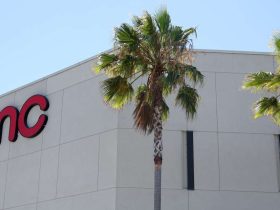Tesla has cut prices on its Model 3 and Model Y vehicles in the U.S., as the company has done several times in recent months. More cuts are making investors nervous. The electric-vehicle maker’s stock is down in Friday trading.
Tesla (ticker: TSLA) lowered the price of its Model 3 rear-wheel drive to $38,990 from $40,240, according to its website. The prices of the Model 3 long-range and performance versions to $45,990 and $50,990, respectively.
The price for the Model Y long-range vehicle was lowered to $48,490 from $50,490. The price of the Model Y performance car was lowered to $52,490.
Tesla stock was down more than 3% in early trading, but just after 1 p.m. was up 0.1%, while the
S&P 500
and
Nasdaq Composite
are up 1.2% and 1.5%, respectively.
The price cuts come after Tesla reported it delivered about 435,000 cars in the third quarter, missing a consensus estimate of 455,000. (The consensus estimate at the start of the third quarter was about 473,000 units, according to FactSet.) The miss was partly driven by plant shutdowns to upgrade the company’s factories.
Still, the miss raised questions about demand. So do price cuts. CEO Elon Musk said on the company’s second-quarter earnings conference call in July that Tesla sees real-time demand and can make real-time production decisions. Tesla gets its orders online and it is, essentially, the dealer and the auto maker—that is different from
Ford Motor
(F), for example, which sells to a network of independent dealers.
“We adjust course according to what the mood of the public is. Buying a new car is a big decision for a vast majority of people,” said CEO Elon Musk responding to a question about pricing. “So any time there’s economic uncertainty, people generally pause on new car buying at least to see what happens.”
Rising interest rates have slowed the economy and the labor market, and made it more expensive to purchase a car. Tesla’s price cuts, to some extent, have been intended to offset all that. In December, a rear-wheel drive Model 3 started at roughly $47,000. Now it’s $39,000, down about 17%. Tesla vehicles didn’t qualify for the $7,500 Federal purchase tax credit then. Adding that to the equation, the net cost of a rear-wheel drive Model 3 is now about $32,000, down 33%.
A long-range all-wheel drive Model Y was priced at $67,000 in December. It’s $48,500 now, down 28%. Including the tax credit, the net cost to buyers is now about $41,000, down 39%.
The declines are large. They are impacting profit margins. Tesla earned operating profit margins of about 17% in 2022. Wall Street projects 10% in 2023, and 15% in 2024. Prices will have to stop falling for a 15% profit margin to become realistic.
Musk, of course, is right to point out rates matter with car purchase. He still appears to have a blind spot over how to stimulate demand though. Tesla still does no traditional advertising.
Tesla didn’t respond to a request for comment about ads.
“Look at the difference in cost. Last night’s price cuts cost $1.2 billion [in revenue],” says
Future Fund Active
exchange-traded fund (FFND) co-founder Gary Black. “Even if Tesla spent $100 million on an education campaign they could get more [demand] impact.”
Not all pricing actions in recent weeks have been cuts. Tesla released an updated Model 3 vehicle with a higher price point in China and Europe, but not in North America. Investors, and car buyers, expect an updated Model 3 soon.
Waiting for a new model is another reason demand can be weak, and prices for older versions can fall.
Coming into Friday trading, Tesla stock was up 111% so far this year, but down 6% over the past three months.
Write to Adam Clark at adam.clark@barrons.com and Al Root at allen.root@dowjones.com
Read the full article here













Leave a Reply